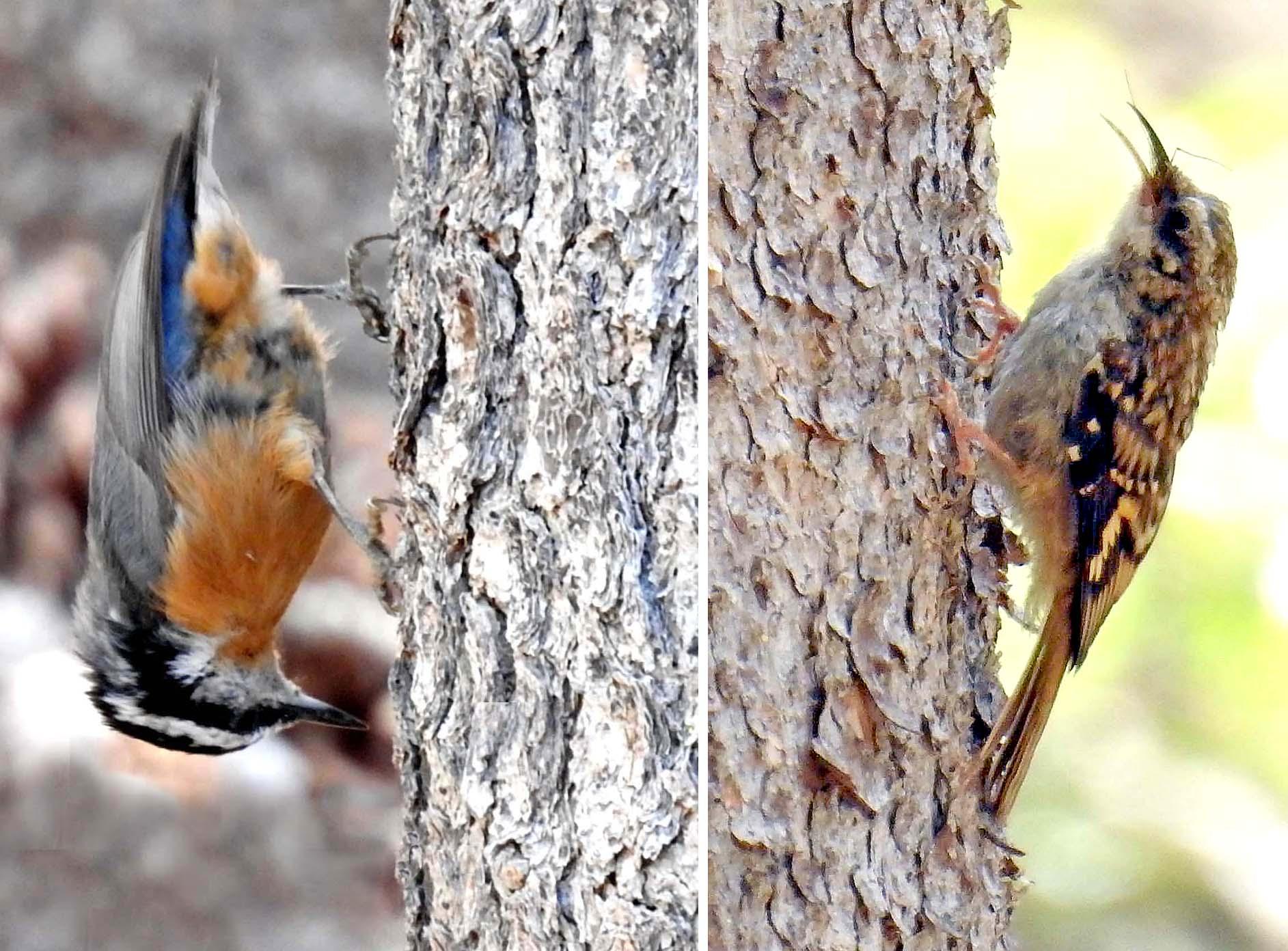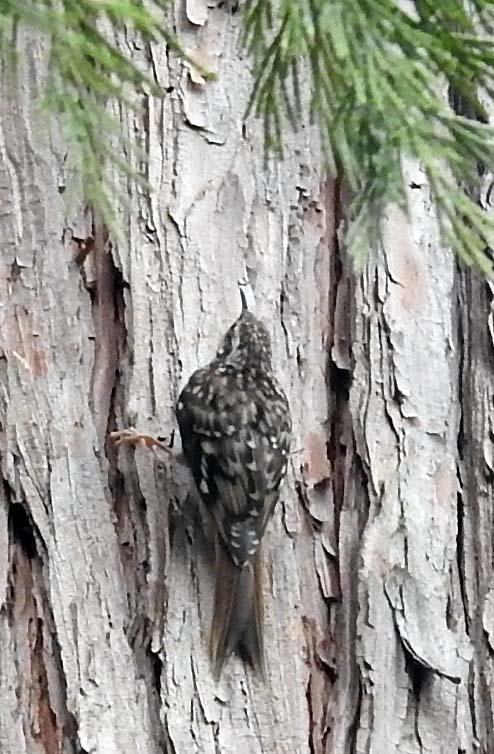Conifer Tree Trunks (not as boring as you might think)!
September 20, 2024

California Red Fir — Abies magnifica
The Lakes Basin is filled with conifers. You can often observe birds and mammals nesting in them, eating their cones, climbing and perching on their branches, or foraging for insects in the needles. To the casual observer the woody conifer trunk itself doesn’t look inhabited. However, upon close examination, a variety of birds, insects, and fungi can be found using it! It is an ecosystem of its own!
Two different birds made me curious about what lives on tree trunks, the Brown Creeper and the Red-breasted Nuthatch. Over the years I have observed these birds foraging on tree trunks many times. I guessed that they were looking for insects in the bark crevices but wasn’t sure what they were eating. The Cornell Lab of Ornithology set me straight on the types of insects that they eat, and there are LOTS of different kinds! A lot of the beetles that they eat are the ones that kill trees!

Red-breasted Nuthatch — Brown Creeper
Sitta canadensis — Certhia americana
Both of these birds live year-round in the Lakes Basin. They are small in size, approximately 5” in length, with wingspans of approximately 8”. While searching for insects, the Red-breasted Nuthatch climbs, up, down and sideways on tree trunks. The Brown Creeper spirals up (not down or sideways) on tree trunks. They both also forage on tree branches. The Red-breasted Nuthatch is boldly marked and colorful, where as the Brown Creeper is camouflaged so well that on some trees it looks a piece of moving bark!

Brown Creeper — Certhia americana
The following information about Brown Creepers and Red-breasted Nuthatches is from the Cornell Lab of Ornithology at https://birdsoftheworld.org/bow.
“In winter: Animal foods include a variety of insects and larvae, spiders and their eggs, ants, and pseudoscorpions; a small amount of seeds and other vegetable matter. Breeding season: same as winter, but possibly no vegetable matter eaten. Nestlings appear to be fed only insects.
“Insects include stink bugs, fruit flies, dark-winged fungus gnats, cerambicid beetles, cylindrical bark beetles, bark weevils, stem weevils, western pine beetles, red turpentine beetles, engraver beetles, and bark beetle parasitoids, lepidopterans, neuropterans, caddis flies ; weevils, leaf beetles , flat-bugs, jumping plant lice, leaf hoppers, scale insects, eggs of katydids , ants, sawflies, caterpillars, cocoons of Bucculatrix, and pupae of the codling moth, and spiders.
“All year: primarily on trunks of live trees, but occasionally on large branches, sometimes on medium and small branches, and rarely on the ground and log.”
Your questions and comments are appreciated. Please feel free to email me at northyubanaturalist@gmail.com. Thanks!
Featured Articles

Sierra Hardware Plans Extensive Repairs After Flood Damage →
December 8, 2025
Sierra Hardware faces extensive repairs after Thanksgiving flood damages store flooring and drywall.
Sheriff’s Office Accepts $60,000 Grant for New Search and Rescue Team →
December 2, 2025
Confusion Surrounds Release of the Plumas County Grand Jury’s Report →
December 4, 2025
WCB Considers Grant for Sierra Valley Tribal Land Purchase →
Updated November 22, 2025
Downieville Fire Auxiliary Hosts Annual “Holiday on Main” Event Saturday →
December 2, 2025